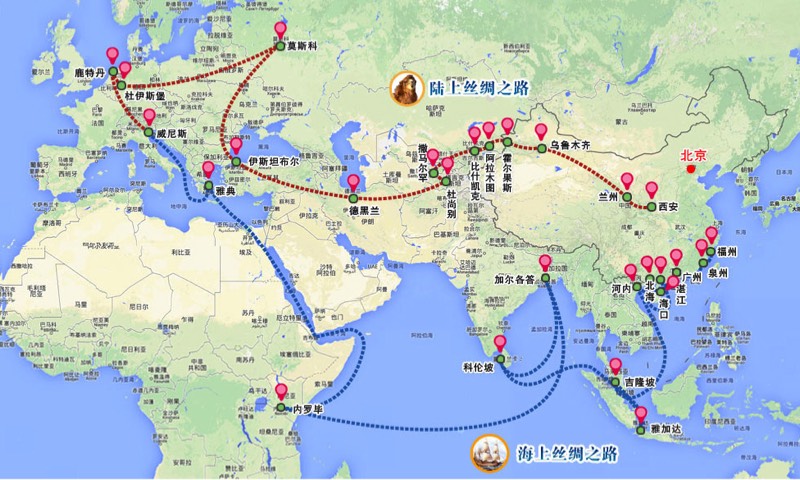
The Maritime Silk Road

“Silk Road" is the name give to α historically famous trading route across Eurasia, through which the most influential goods freighted to the west from China were silk products, hence the name. Generally, the Silk Road refers to the land passage initiated by Zhang Qian, a special envoy to the Western Regions, starting from Xi’an, passing Gansu and Xinjiang Province in China to the Central and Western Asia and connecting all Mediterranean countries. This route is shown in red in the map above. In the latter half of the 19th century, the German geographer Richthofen named this route the “Silk Road“, which has been followed to this day.
The Maritime Silk Road refers to the route from each port in south China, such as Guangzhou to Southeast Asia, India, Arabia or even farther through heading west by boat or north through the red sea and overland transshipment to the Mediterranean, following the present day route of the Suez Canal. The maritime silk road crossed the Mediterranean sea from Suez/Alexandria in Egypt, via Greece and the the Italian Ionian sea ports to Venice in Lombardy (northern Italy). This route is shown in blue in the map above.
With the enhancement in navigation technology and accumulation of seafaring experience, coupled with the advantages of lower transportation cost and larger quantity of freight in marine trading, the Maritime Silk Road gradually replaced the Silk Road on land to become,the major passage for communication between the east and the west the period of the Song (960-1279) and Yuan dynasties (1271-1368).